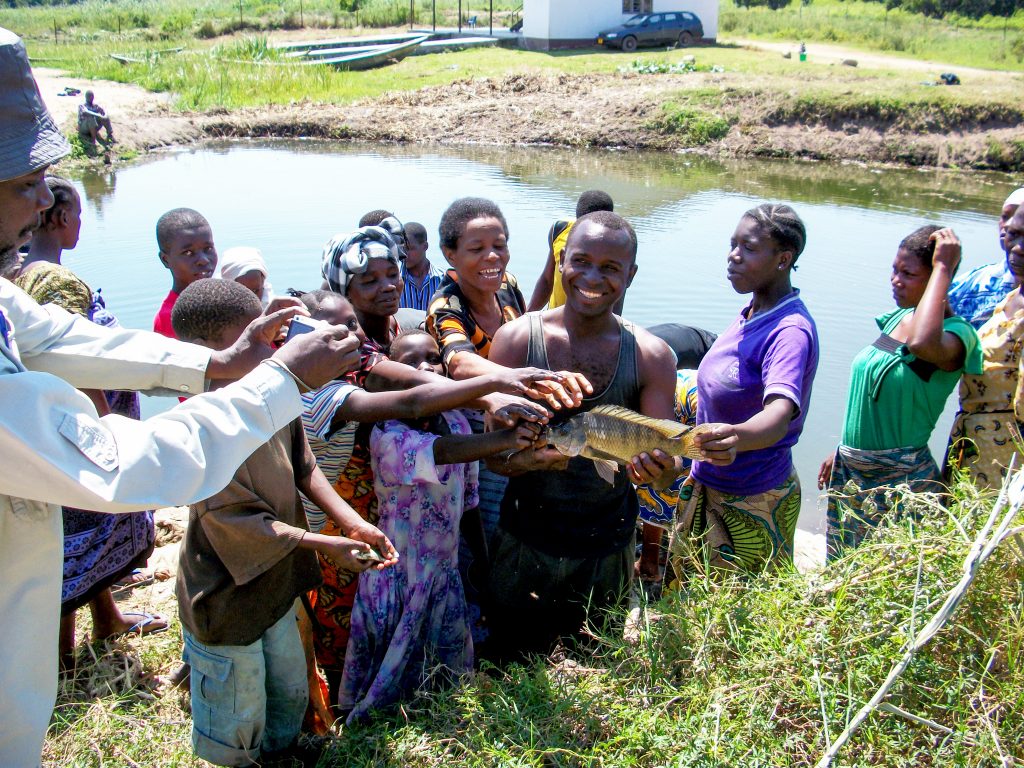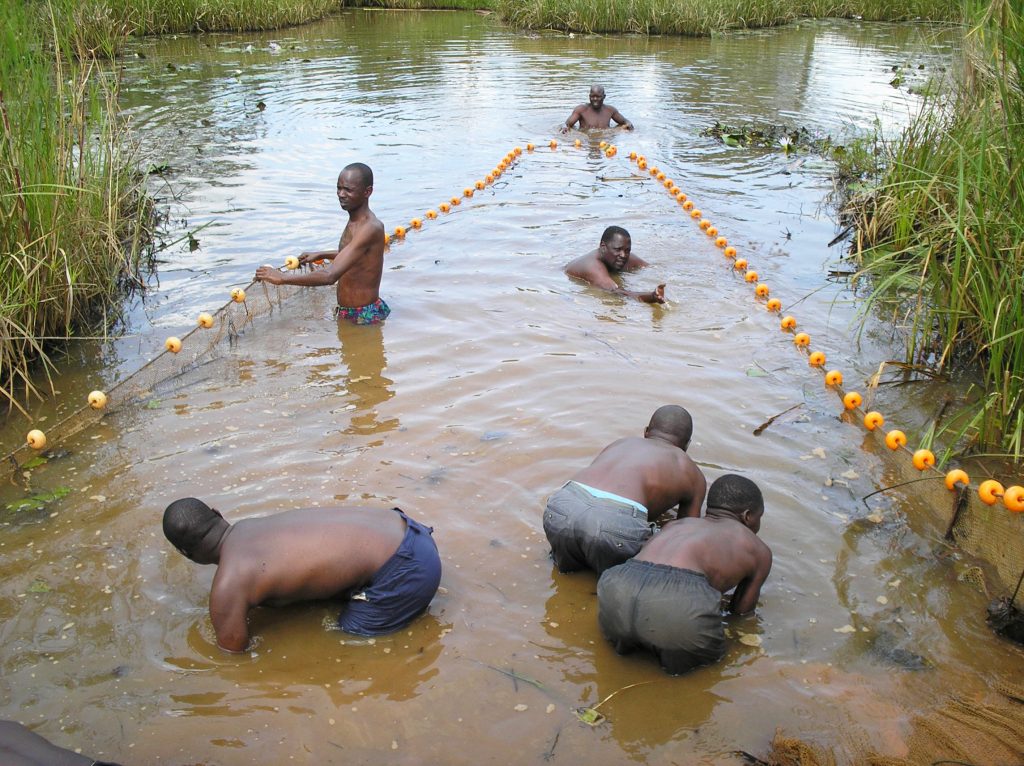Kenya / Aquaculture
Eat More Fish
For better nutrition outcomes, national fisheries and food policies in Kenya should include aquaculture in developing positive attitudes towards consumption of value-added fish products
This article is by Maureen Cheserek (mcheserek@egerton.ac.ke), Department of Human Nutrition, Egerton University; Kevin Obiero (k.obiero@kmfri@.go.ke), Kenya Marine and Fisheries Research Institute (KMFRI), Sangoro Centre; and Erick Ogelo (erick.ogello@gmail.com), Department of Fisheries and Natural Resources, Maseno University, Kenya.
Fish has become an important component of food systems in the global agenda for nutrition and food security, with the fisheries and aquaculture sector providing essential protein to vulnerable populations across the globe. However, for this to continue, large-scale and small-scale fish producers, governments and other stakeholders must work together to create a significant impact in improving livelihoods, diversifying diets and maximizing the contribution of fish to human nutrition.
In Kenya fish is a vital source of essential macro- and micro-nutrients that can play an important role in reducing the high prevalence of undernutrition. The total annual fish production in the country is estimated at 180,000 tonnes, against much higher annual demand. With the increasing national demand for quality fish protein and expanding regional markets, fish farmers and fishermen often prefer selling fish than consuming them. This has contributed to stagnating fish consumption per capita, estimated at a paltry 4.5 kg/person/year, compared to the global average of 20kg/person/year.
The Kenyan aquaculture sector is growing fast, but only produces tilapia and catfish in restricted regions in the country.
A recent study conducted by the authors and supported by the Kenya Climate Smart Aquaculture Project (KCSAP) in three counties in western Kenya reported that small-scale fish farmers do not have enough fish in their own diets, as only three out of 10 surveyed women and young children were consuming fish. This implies that women, children and their family members are not meeting their recommended nutrient requirements, which places them at a high risk of malnutrition. One of the major contributing factors to this trend is the decline in the capture fisheries and struggling aquaculture sector, even as consumption demand surges.
The freshwater capture fisheries sector, which supplies 80 per cent of the fish produced in Kenya, is dominated by silver cyprinid (Rastrineobola argentea), Nile perch (Lates niloticus), Nile tilapia (Oreochromis niloticus) and African catfish (Clariasgariepinus). The marine sector is mainly exploited by foreign fleets, which ship out fish to foreign countries. Marine fish production by domestic fleets is mainly at an artisanal scale and does not contribute significantly to markets outside the coastal region.
The Kenyan aquaculture sector is growing fast, but only produces tilapia and catfish in restricted regions in the country. In Kenyan capture fisheries and aquaculture, the distribution of value-chain actors by gender shows that men dominate production chains, that is, fishing, pond operations, cage farming, boat assembling, hatchery operations and tourism activities, while women dominate post-harvest activities in the trading, processing, feed manufacturing and seaweed sector.
National diet
Over the past four decades, fish has been a delicacy among riparian communities in the Lake Victoria region. However, today, fish is part of the national diet and consumed by a majority of Kenyan communities, thanks to government efforts to promote fish eating through numerous campaigns and fish-farming projects.

Nonetheless, fish eating is still not popular among pastoral communities, who depend largely on livestock as a staple source of protein. Besides, the climatic conditions in some parts of Kenya do not favour fish farming. Other reasons, such as socio-cultural restrictions, have also been cited as impediments to fish eating in some communities. Among the fishing communities, a notable barrier to consumption of fish by small-scale farmers is the unavailability of value-added fish products, knowledge of the existence of these products, skills in the preparation and cooking of fish, and other socioeconomic factors.
In many rural communities, fish consumption by frequency and portion sizes has greatly increased from the time farmers began culturing fish. Hence, nutrition-sensitive fish-food systems can markedly improve Kenyan household diets which are dominated by carbohydrate-rich staples. A game changer solution is to empower women and youth from low-income households through nutrition education, social behavior change communication strategies, and participatory cooking trainings. This is expected to improve nutrition and health outcomes of women and young children as consumption of poor-quality diets and lack of access to diverse foods are the main drivers of malnutrition in Kenya. It is encouraging to note in our research that fish farmers in western Kenya have positive attitudes towards fish consumption and are interested in incorporating value-added fish products into their daily diets.
Little value addition
Previous studies have shown that over half of the Kenyan households (58 per cent) consume fish more than once a week because they can readily access and acquire fish through market purchases. However, 40 per cent of households consume fish in its natural form with little value-addition to improve acceptability and consumption. Nile tilapia is the most frequently consumed fish in Kenya. The supply of Nile Perch has decreased significantly from Lake Victoria due to ecological challenges. However, the little quantities are highly priced and mainly processed for the export market. Consequently, the Silver Cyprinid, locally known as dagaa, is increasingly becoming an important alternative source of nutrition for low-income consumers, who make up the majority of the population. Indeed, dagaahas become the smallest fish with the biggest socioeconomic impact to the riparian communities and beyond.

This small fish has a huge potential to improve the nutritional quality of complementary foods and to assist in mitigating the nutritional deficiencies of zinc, iron and calcium. A strong emphasis should be placed on the nutrition education of mothers or care givers of young children to ensure the timely incorporation of animal foods into diets, so as to avoid health problems such as pain, diarrhea, intolerance, allergy, malabsorption, and constipation reported in surveys.
African catfish is mainly produced in aquaculture but is not as widely consumed due to socio-cultural reasons. In rural areas, fresh fish is preferred due to the lack of knowledge on fish value-addition techniques. In major towns and cities, value-added fish products, such as fish samosas, fish fingers, fish balls and fish fillets, are available. Frozen tilapia from China is the major imported species.
With increasing recognition of the benefits of fish as a vital source of essential macro- and micro-nutrients, government policies and nutrition education programmes, such as the ‘Eat More Fish’ campaign, are now devoted to teaching non-fish-eating tribes the benefits of eating fish. This will be supported by the implementation of the National Guidelines for Healthy Diets and Physical Activity.
Given the positive projections for the contribution of fish to animal protein intake in Kenya, food-security and nutritional programmes should recognize and build on the potential of fish to improve dietary quality, micronutrient intake, nutrient status, and overall health. More robust models are needed to better understand fish demand and supply projections beyond 2030 since Kenya’s population is expected to double by 2050.
The enabling policy environment—including the Aquaculture Business Development Programme led by the International Fund for Agricultural Development (IFAD) and the Kenya Climate Smart Aquaculture Project—has attracted substantial public funding for aquaculture development in the country. In order to ensure better nutrition outcomes, national fisheries and food policies should include aquaculture, in the context of coherent linkages between production, supply, and consumer demand and access.
For more
Assessment of the integration of fisheries and aquaculture in policy development. Framework and application in Africa
https://www.fao.org/policy-support/tools-and-publications/resources-details/en/c/1306989/
Maximizing nutrition in the fisheries and aquaculture sector in Kenya
https://www.fao.org/documents/card/en/c/CB5604EN/
Fish as food
https://www.icsf.net/images/samudra/pdf/english/issue_83/4430_art_Sam_83_art09_Analysis_Molly.pdf
The Voluntary Guidelines to Support the Progressive Realization of the Right to Adequate Food in the Context of National Food Security
http://www.fao.org/3/a-y7937e.pdf